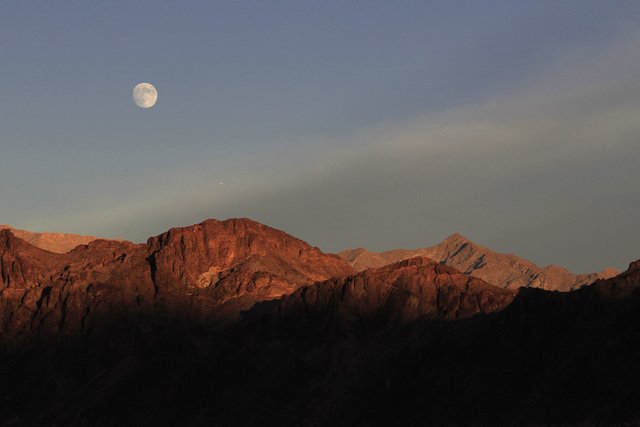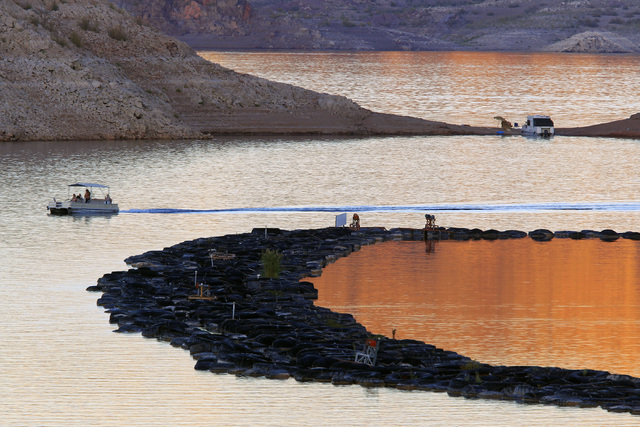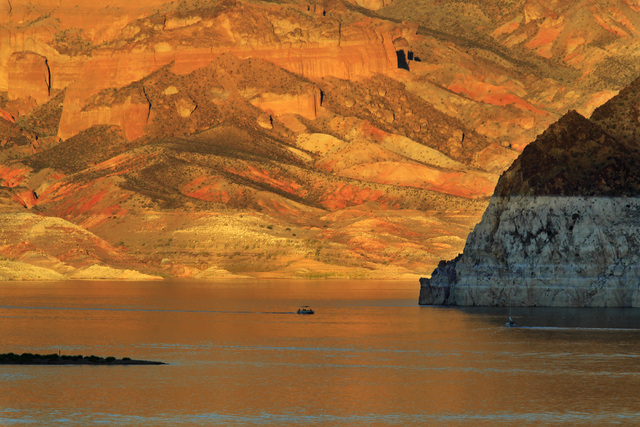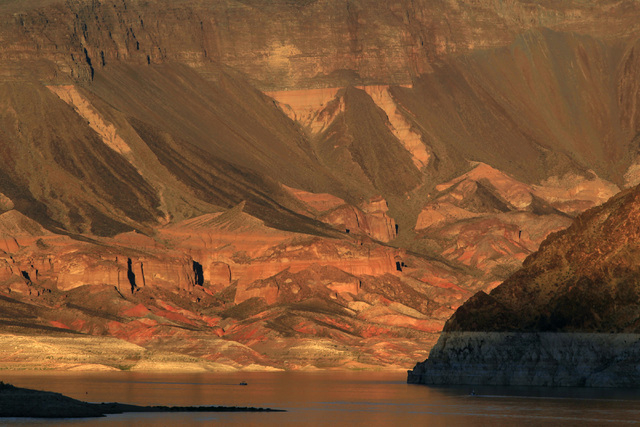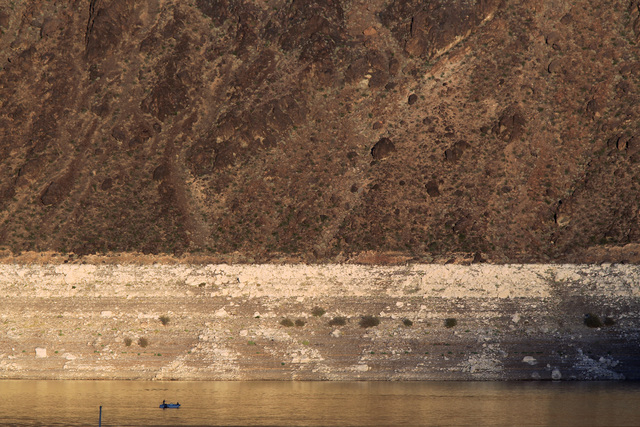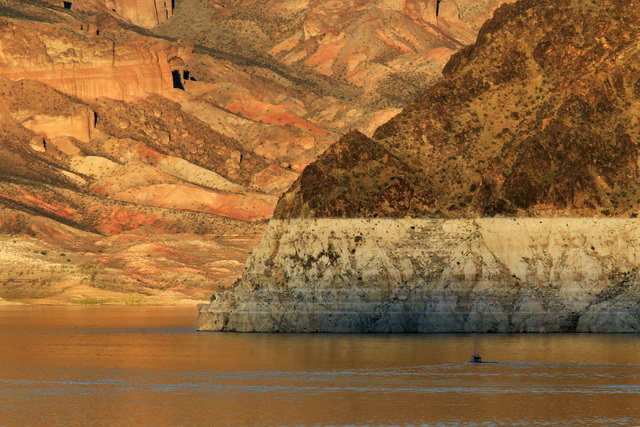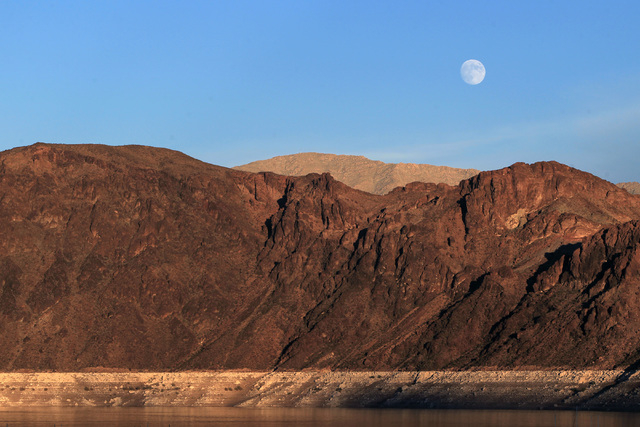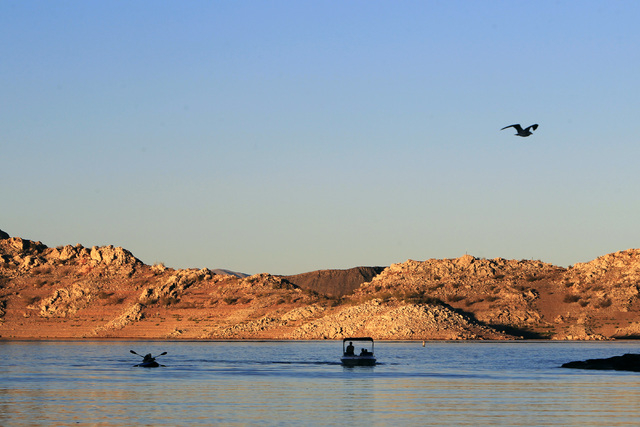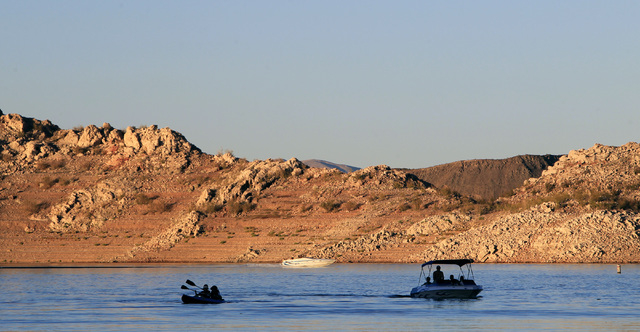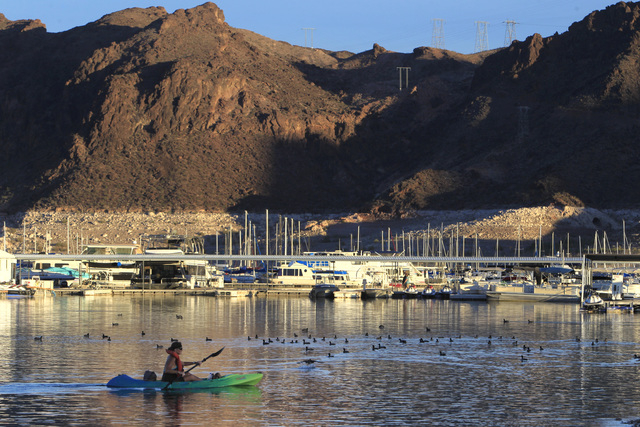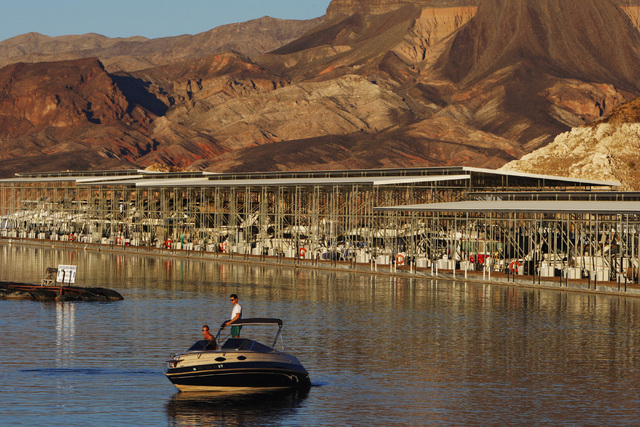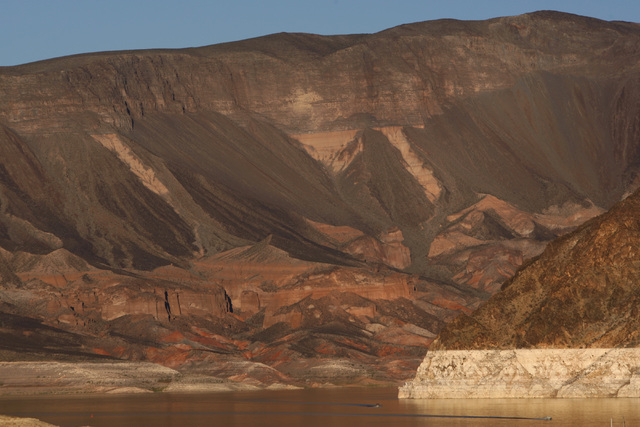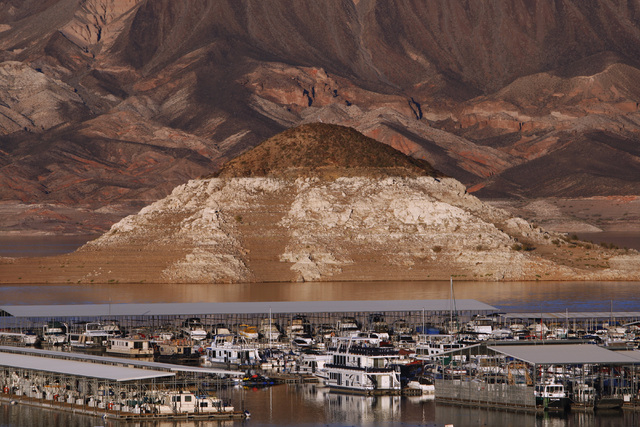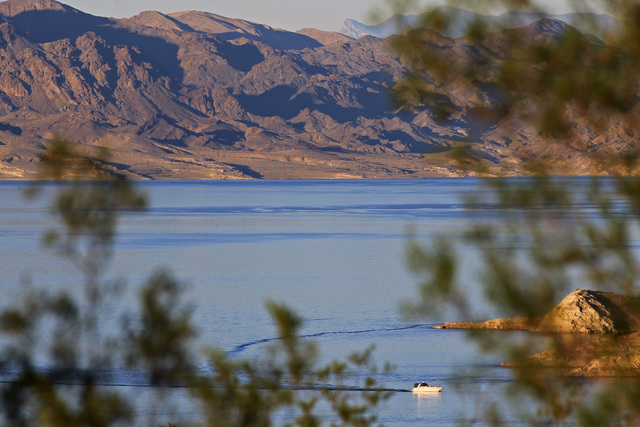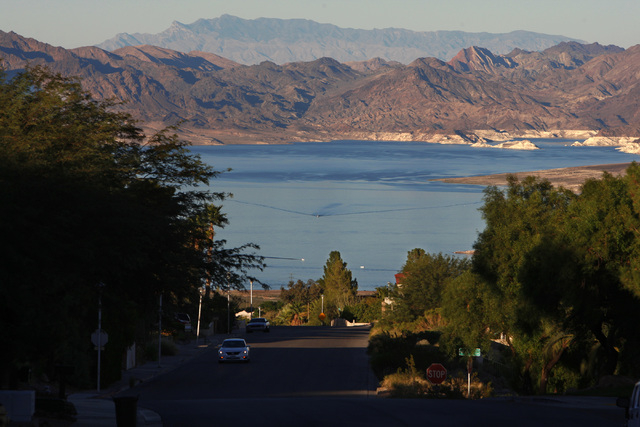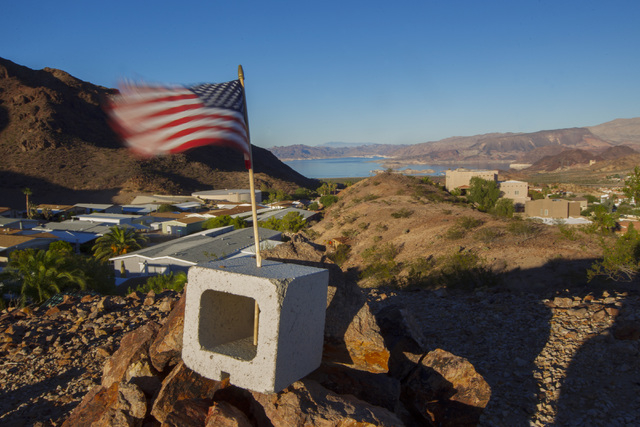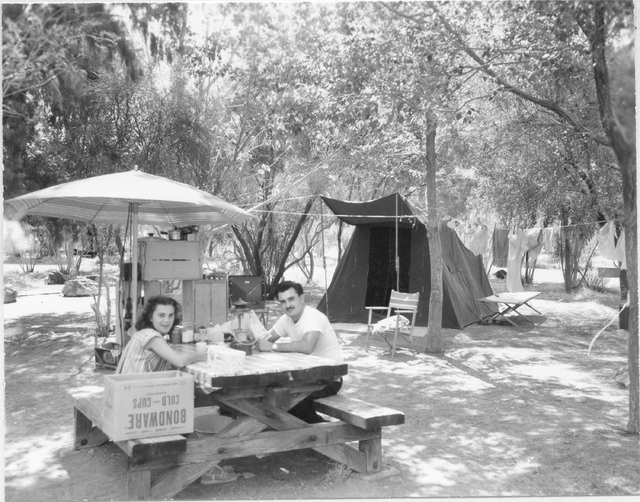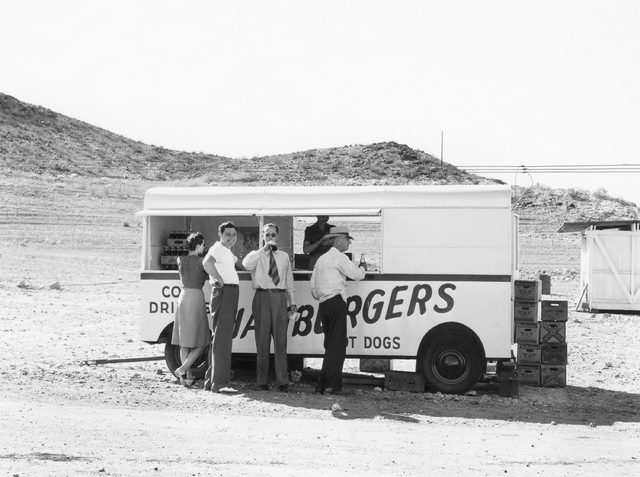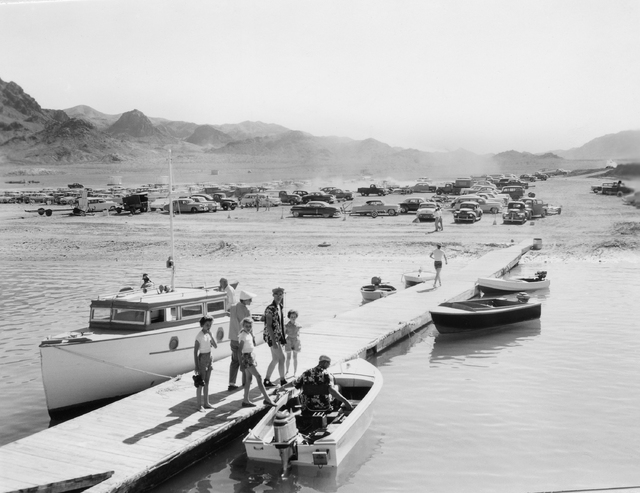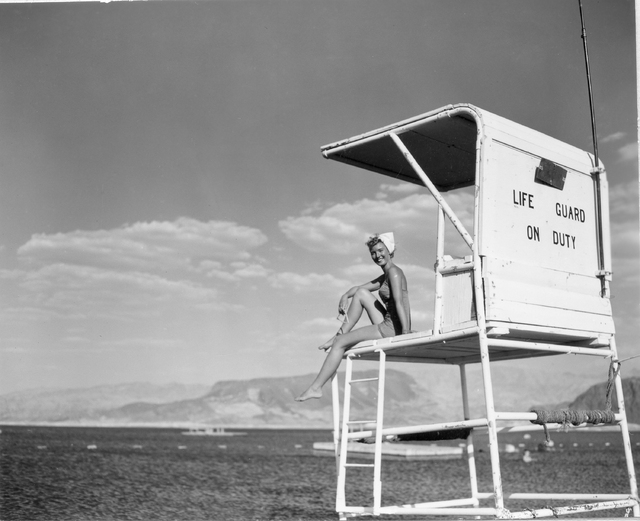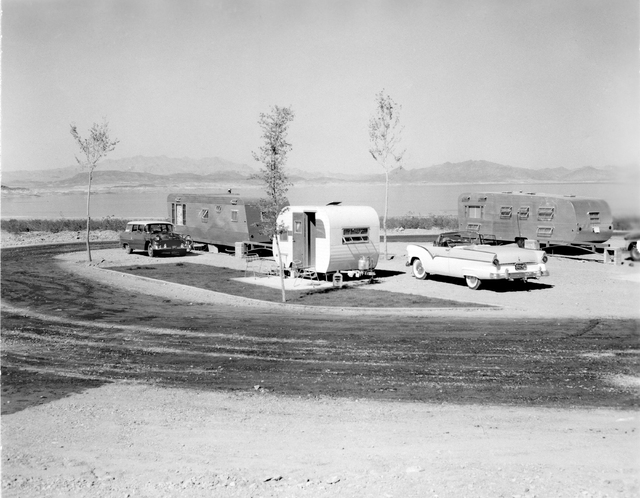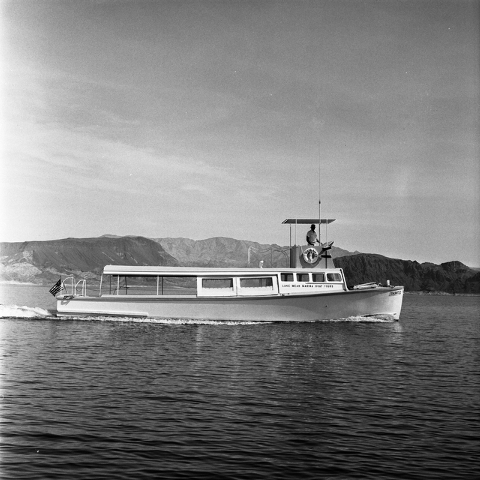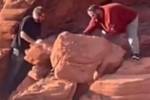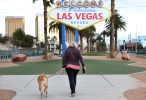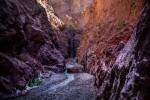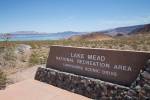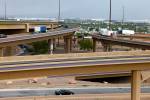Lake Mead rings in 50 years as recreation area
The view of Lake Mead was not so different 50 years ago.
On Oct. 8, 1964, the day Congress voted to designate the country’s largest man-made reservoir as its first National Recreation Area, visitors also were struck by the sight of a giant white bathtub ring marking where water used to be.
That ring was a little smaller in 1964, but not by much.
Though a lot has changed at Lake Mead over five decades, the experience that draws people there by the millions remains much the same — despite all the bleak reports and doomsday predictions for the lake and the river that feeds it.
“It’s had its ups and downs, but it’s still a wonderful place to come to,” said Gail Gripentog Kaiser, who manages the marina operations her family owns at Lake Mead. “If we could erase that white line, nobody would even know the water is down. It’s still a big, beautiful lake.”
Drawing a crowd has never been a problem for Lake Mead. Even before it completely filled for the first time, the reservoir attracted close to 400,000 people in 1937, the first year statistics were kept.
The attraction was obvious.
“The reservoir created more than 550 miles of scenic shoreline, distinguished by Native American sites, natural vistas, and beaches,” the late University of Nevada, Las Vegas historian Hal Rothman said in his official administrative history of the park. “Visitors who came to view the dam gazed in awe at the crystal waters of Lake Mead lapping up against the stark canyon walls composed of volcanic materials. Few sights in the American West compare with the surreal juxtaposition of a massive body of captive cool water in the midst of the Mojave, the country’s driest and hottest desert.”
Back then, Hoover Dam and the growing lake behind it were jointly managed by the Park Service and U.S. Bureau of Reclamation. For the Park Service, founded 20 years earlier to preserve natural wonders, it marked the beginning of a new mission: regulating recreation at a man-made attraction.
Rothman wrote that the Park Service initially “stumbled,” but “learned to manage this unwieldy obligation.”
They learned on the fly because people kept coming.
In 77 years of record keeping, Lakes Mead and Mohave, both part of the recreation area, have drawn about 390 million people, more than the combined population of the U.S. and France.
That congressional vote on Oct. 8, 1964 officially made Lake Mead National Recreation Area part of the National Park system, and the park has averaged roughly 7 million visitors per year ever since.
Though visitation has dropped in recent years, it still consistently ranks among the 10 busiest national parks, drawing millions more visitors each year than the Grand Canyon, Yosemite, Zion, the Statue of Liberty and Mount Rushmore.
Of the 369 sites managed by the Park Service, only five saw more recreational visits in 2013 than Lake Mead’s 6.3 million.
“And that’s not even counting the 4.5 million people that pass through the park on U.S. Highway 93,” said Bill Dickinson, the park’s superintendent since 2000.
DROUGHT AND DECLINE
The past 15 years have been hard on the reservoir, which has seen its surface drop by more than 130 feet amid stubborn drought in the mountains that feed the Colorado River.
The lake’s decline has caused major problems for the park, where some boat launch ramps now end in dry sand, and marinas have been chased to deeper water or closed altogether. A decade ago, Lake Mead was home to nine launch ramps and six marinas. Today, just six ramps and three marinas remain.
Since 2000, the Park Service has spent roughly $40 million at Lake Mead to extend ramps, roads and utility lines; build new parking lots; shift docks and navigational aids for boaters; and mark new hazards on land and water. More costly work lies ahead — roughly $2.1 million of it for every 10-foot drop, just to extend launch ramps.
The lake now hovers near its lowest point since it was first being filled in 1937. But as bad as that might sound, it’s only about 9 feet lower than the lake was 50 years ago today, when the Colorado River was being held back to fill Lake Powell behind a new Glen Canyon Dam.
Amid today’s fluctuating water levels, experts see some trends emerging. More visitors to the park seem to be congregating at Lake Mohave, where the tightly regulated flows through Hoover Dam keep the surface steady and predictable.
More people also seem to be exploring the park’s backcountry. As Dickinson put it, “water is the primary focus” for most visitors, “but it’s only 13 percent of the park.” Lake Mead still ranks as the nation’s largest recreation area, with 1.5 million acres in Nevada and Arizona that range in elevation from 500 to 7,500 feet above sea level.
“That’s a lot of territory,” said Alan O’Neill, the park’s superintendent from 1987 to 2000. “That’s why we had a plane for a number of years.”
O’Neill’s Park Service career included stints at Glacier National Park in Montana and assignments at many other jewels of the park system. He said Lake Mead ranks among the best because of its diversity. After all, what other park offers opportunities to cruise miles of open water in a speed boat or camp in a remote wilderness area at the edge of the Grand Canyon?
“I think people miss the point when they say it’s just a recreation area,” O’Neill said. “It’s not just the lakes.”
RAISED ON THE WATER
Betty Gripentog’s first ride on a boat came at Lake Mead in 1940. She was 9 years old.
Seventeen years later, she and her husband, Bob, traded some commercial property near downtown Las Vegas for a modest marina at the lake’s western end.
“We wanted to fish a lot and work a little,” said Gripentog, now 83. “It didn’t quite work out that way. It became a lot of blood, sweat and tears.”
She said the operation back then was a “primitive” collection of pre-war wooden trailers with “a generator that ran sometimes.” They had no water, sewer or electrical service.
The couple gradually built and expanded the business, and their children grew up on the lake, where instead of curfews they were restricted to which islands they were allowed to visit.
“How many 12-year-olds do you know with their own boat?” said Gail Gripentog Kaiser, Betty’s daughter, now 60.
The Gripentog-owned Las Vegas Boat Harbor operated in Las Vegas Bay from 1957 until 2002, when the shrinking lake forced the family to move their docks and slips to deeper water.
Today Las Vegas Boat Harbor and Lake Mead Marina, both owned by the Gripentogs, operate side by side in Hemenway Harbor, the busiest part of the lake just down the hill from Boulder City.
They blame the recent drop in visitation on all the negative press Lake Mead gets these days — a steady stream of drought-related stories that fool potential visitors into thinking the lake is little more than “a mud hole,” Betty Gripentog said.
“If people would just come out, they’d see there’s just as much fun out there now as there was then,” she said.
Added her daughter, Gail: “There’s still no place like Lake Mead.”
Contact Henry Brean at hbrean@reviewjournal.com or 702-383-0350. Find him on Twitter: @RefriedBrean.



